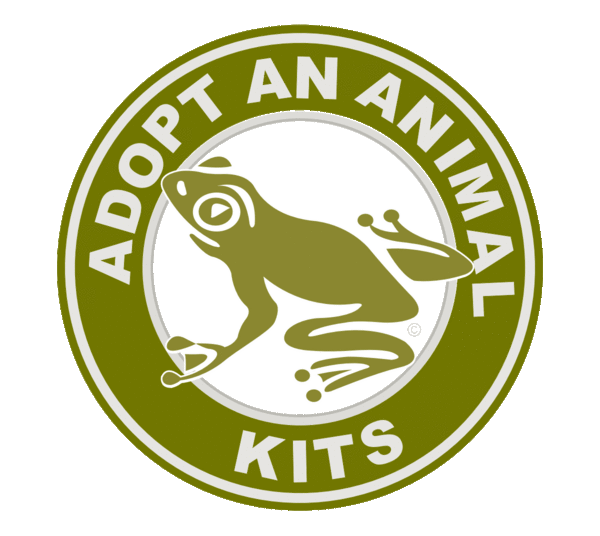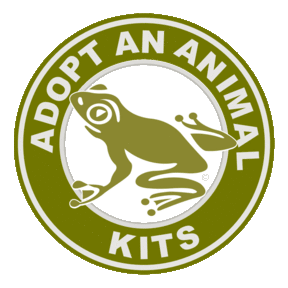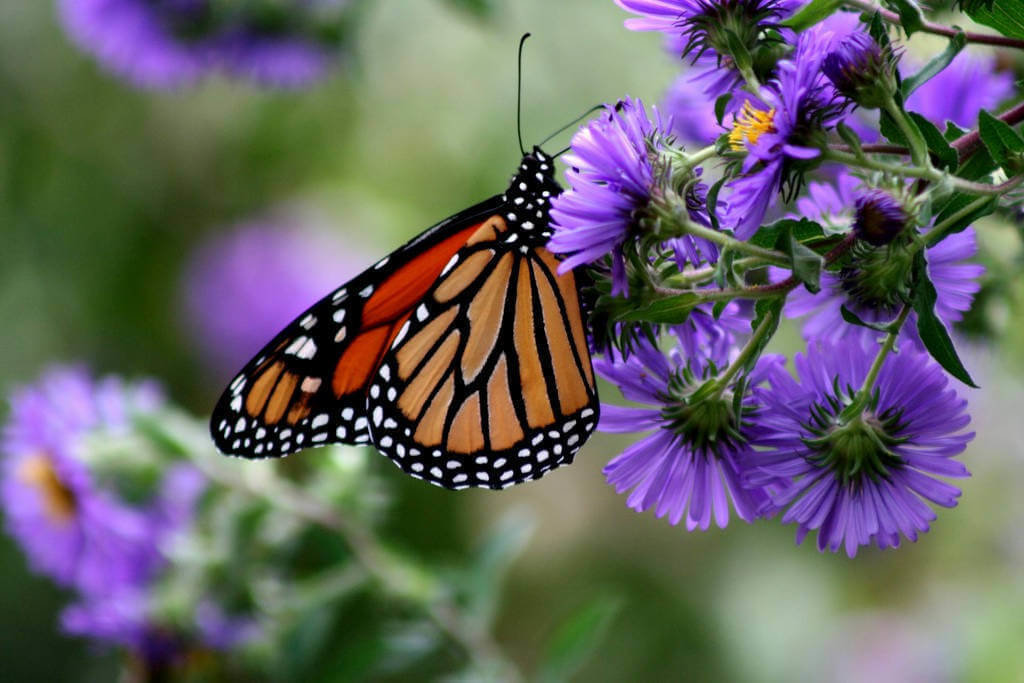

Adopt An Animal Kits
Adopt An Animal symbolically. Your Adopt An Animal Kit comes in a Deluxe Folder and includes: Glossy Photo of Your Adopted Animal; Adopt An Animal Adoption Certificate; Fact Sheet About Your Adopted Animal; Help Animals Info Cards Packed With Information On Animal Issues & How You Can Help Animals And The Environment. Adopt An Animal for Yourself or as a Gift.
Adopt A Butterfly
Adopt A Butterfly
Your A Butterfly Kit comes in a Deluxe Folder and includes:
- Glossy Photo Of Your Adopted Butterfly
- Adopt A Butterfly Adoption Certificate
- Fact Sheet About Your Adopted Butterfly
- Help Animals Info Cards Packed With Information On Animal Issues & How You Can Help Animals And The Environment
Adopt A Butterfly Kits make great gifts and can be sent directly to the recipient. Simply supply the recipient's name and mailing address as shipping information. We'll even include a letter stating the Adopt An Animal Kit is from you.
Adopt An Animal symbolic adoption is a one time fee. Adopt an animal for yourself or order an Adopt An Animal Kit as a gift. Help make a difference for animals - Adopt An Animal Today!
Adopt A Butterfly
Butterflies are part of the class of insects in the order Lepidoptera. Adult butterflies have large, often brightly colored wings, and conspicuous, fluttering flight. The group comprises the true butterflies (superfamily Papilionoidea), the skippers (superfamily Hesperioidea) and the moth-butterflies (superfamily Hedyloidea). Butterflies are the second largest group of pollinators, following bees. There are about 17,500 species of butterflies spread throughout the world.
These beautiful animals undergo a fascinating metamorphosis which takes place in four stages: egg, caterpillar, pupa and adult.
Mother butterflies attach their eggs with a special glue to caterpillar food, or “host” plant. As the glue hardens it contracts, deforming the shape of the egg. Each species of butterfly has its own host plant range, and while some species of butterfly are restricted to just one species of plant, others use a range of plant species.
Butterfly eggs are protected by a hard shell lined with a thin coating of wax which prevents the egg from drying out. Each egg contains a number of tiny funnel-shaped openings at one end that allow sperm to enter and fertilize the egg. Butterfly and moth eggs vary greatly in size between species.
The egg stage lasts a few weeks in most butterflies. Eggs laid close to winter, especially in temperate regions, go through a resting stage and the hatching may take place only in spring. Other butterflies may lay their eggs in the spring and have them hatch in the summer. These butterflies are usually northern species.
When the caterpillar is born, it eats its egg, then begins eating the host plant. Host plants often have toxic substances in them and caterpillars are able to retain them. This makes them unpalatable to birds, insects and other predators. Such unpalatibility is advertised using bright red, orange, black or white warning colors.
Caterpillars spend practically all of their time in search of food. Some caterpillars form mutual associations with ants. They communicate with the ants using vibrations and chemical signals. The ants provide some degree of protection to these caterpillars, and they in turn gather honeydew secretions. Others caterpillars communicate with ants to form a parasitic relationship.
Some caterpillars have the ability to inflate parts of their head to appear snake-like. Many have false eye-spots to enhance this effect. Some caterpillars produce foul-smelling chemicals used in defense.
When the caterpillar's insides grow too big for its outside, its covering splits and is shed. A new exoskeleton lies underneath. The caterpillar continues to shed numerous times, then becomes a pupa. It then seeks a sheltered spot, suspends itself by silken threads and sheds one more time forming a hard casing around its body. Inside this chrysalis, the pupa is growing six legs, a proboscis, antennae and wings. Within days, months or years, depending on the species, the chrysalis breaks open and a butterfly emerges.
Butterflies can live in the adult stage from a week to a year, depending on the species. They have four wings, usually brightly colored with unique patterns made up of tiny scales. They remember things they learned as caterpillars. They can fly up to 30 mph and up to 50 miles in a day. They learn home ranges and memorize locations of nectar and pollen sources, host plants and communal roosting sites. They are able to plan the most efficient routes by using calculations that mathematicians call the "traveling salesman algorithm".
Butterflies feed primarily on nectar from flowers. They are important as pollinators for some species of plants and are capable of moving pollen over greater distances than bees. Adult butterflies consume only liquids, ingested through the proboscis. They sip water from damp patches for hydration. They feed on nectar to obtain sugars for energy, and sodium and other minerals vital for reproduction. Several species of butterflies need more sodium than that provided by nectar and are attracted by sodium in salt; they sometimes land on people, attracted by the salt in human sweat. Some butterflies also visit dung, rotting fruit or carcasses to obtain minerals and nutrients. In many species, this mud-puddling behavior is restricted to the males, and the nutrients collected may be provided as a gift during mating.
Butterflies use their antennae to sense the air for wind and scents. The antennae are richly covered with sensory organs. Butterflies "taste" with their feet through tiny receptors. Their sense of taste is 200 times stronger than humans.
Butterflies have excellent vision and most species are sensitive to the ultraviolet spectrum. Some butterflies have organs of hearing and some species are also known to make stridulatory and clicking sounds.
Many butterflies are migratory and capable of long distance flights, using the sun to orient themselves. They migrate during the day and use the sun to orient themselves. They also perceive polarized light and use it for orientation when the sun is hidden.
Many species of butterfly maintain territories and actively chase other species or individuals that may stray into them. Some species will bask or perch on chosen perches. Basking is an activity which is more common in the cooler hours of the morning. Many species will orient themselves to gather heat from the sun. Some species have evolved dark wing-bases to help in gathering more heat. The flight styles of butterflies are often characteristic and some species have courtship flight displays.
THREATS TO BUTTERFLIES
The greatest threats to butterflies are habitat change and loss due to residential, commercial and agricultural development. Many butterfly species are either under the threat of extinction, or have died out completely due to the rise of intensive farming and the loss of habitats.
Butterflies have suffered from the loss of grasslands rich in wild flowers and the decline of woodlands.
Pesticides also threaten butterflies.
Adopt Adopt An Animal Kits
Our Adopt An Animal Kits are educational packets that allow you to symbolically adopt a favorite animal species and contain a variety of information promoting the protection of wildlife, companion animals, farm animals and the environment. By purchasing a symbolic adoption kit you will receive a packet of information regarding daily choices you can make to help the earth and animals.
Your Adopt An Animal Kit comes in a Deluxe Folder and includes:
Glossy Photo Of Your Adopted AnimalAdopt An Animal Adoption CertificateFact Sheet About Your Adopted AnimalHelp Animals Info Cards Packed With Information On Animal Issues & How You Can Help Animals And The Environment.
Adopt an animal for yourself or order an Adopt An Animal Kit as a gift. Symbolically adopting an animal is the perfect gift for a loved one who loves animals, and helps to promote the compassionate treatment of animals and respect for the environment by offering information on how to help the earth and animals. Adopt An Animal Kits can be sent directly to the recipient: simply supply the recipient's name and mailing address as shipping information. We'll even include a letter stating the Adopt An Animal Kit is from you.
Adopt An Animal Kits is a small, independent business not affiliated with any other business, non profit or charitable organization.
Fast Shipping!
Shipping time for Adopt An Animal Kits averages 2 to 4 business days - USA. Allow additional time for Adopt An Animal Kits orders outside the USA. Your Adopt An Animal Packet will arrive approximately 2 to 4 business days following shipping date. Shipping for Adopt An Animal Kits within the USA is by U.S.P.S. Priority Mail.
INTERNATIONAL ORDERS: Average shipping time for Adopt An Animal Kits outside of the USA is 5 to 14 business days, including Canada. International Shipping & Handling for Adopt An Animal Kits is by U.S.P.S. First Class Mail.
About Us

Adopt An Animal Kits, LLC
The world is teaming with an amazing diversity of animals. Some species are beautiful, others bizarre — but they all are important to the ecosystem and deserve our respect, compassion and protection. Unfortunately, many animal species are declining at a rapid rate as a result of irresponsible human activities. Habitat destruction, pollution, hunting, poor agricultural practices and changes in climate are among the threats faced by wildlife and domestic animals.
Adopt An Animal Kits, LLC is a small business who believes in promoting the advancement of compassionate living by educating the public about animal and environmental issues and what individuals can do to prevent cruelty to animals. Through our work, we strive to eliminate the prejudice of animals (speciesism) through educational efforts. Our business produces printed and printable educational materials available to individuals with an interest in earth and animal topics. Our Adopt An Animal Kits seek to educate and influence individuals on environmental and animal issues. The purchase of an Adopt An Animal Kit allows you to symbolically adopt your, or your loved one's, favorite animal species while promoting the protection of wildlife, companion animals, farm animals and the environment. Rather than adopting an indivdual animal, you are symbolicly adopting the species. Each kit contains a collection of information on how you or your loved one can make daily choices to help animals and the environment.
Our website provides an information portal regarding these issues. Information posted on the site is free of charge and available to anyone with an interest. Our printed and printable materials are available to individuals with an interest in earth and animal issues. We produce hundreds of fact sheets, flyers, and digital materials regarding environmental and animal issues. Most materials are available at no cost to anyone with an interest.
Adopt An Animal Kits, LLC is not a charitable or nonprofit organization.

